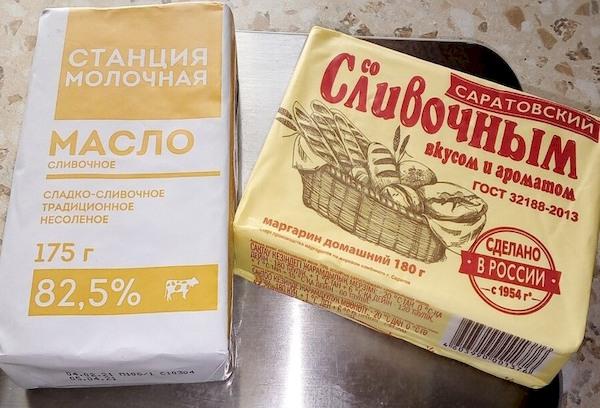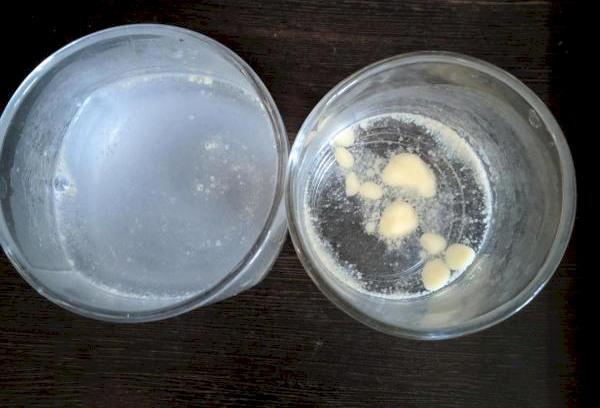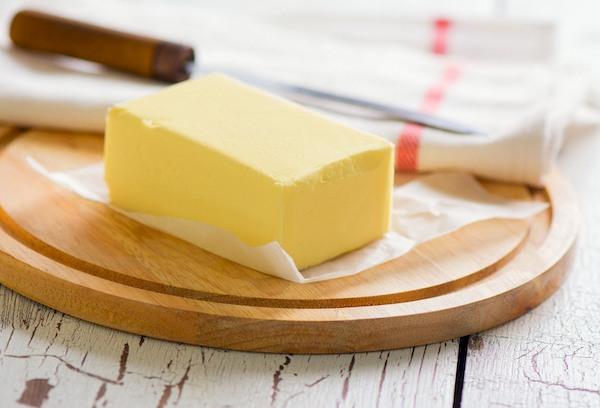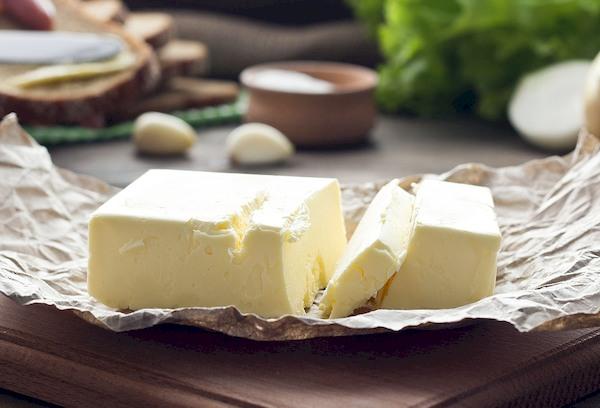What is the difference between margarine and butter - not everyone can tell the difference!
Natural butter is expensive because its production is labor-intensive. Instead of separating from cream or sour cream, it is much cheaper to produce something similar from vegetable fat: margarine or spread. What is the difference between margarine and butter? Everyone. It smells different, softer, and often has a specific taste. By definition, butter is a product made from milk and cream, and margarine is an emulsion fat product consisting of vegetable fats with various additives.
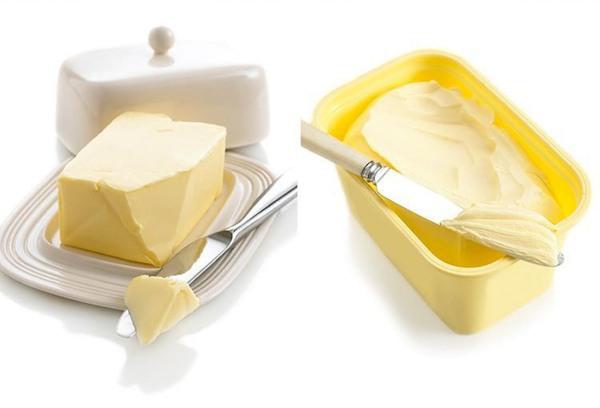
How to distinguish margarine from butter?
Without specific tests, it can be difficult to determine what is in the package, butter or margarine. Modern production technologies, various emulsifiers, flavorings and other additives have made it possible to produce margarine that is as similar to butter as possible.
Only some types of margarines can be distinguished:
- By smell. A natural cow product has a pleasant aroma of cream, margarine has a specific smell of fat.
- By consistency. Margarine is characterized by a soft, spreading consistency. Cow butter is dense, plastic, dry and shiny when cut.
- According to the information on the packaging. The word “butter” is always present on the packaging of a natural product, and cream and cow’s milk are listed first in the ingredients.
Test
When purchasing a product, it is helpful to do some simple testing. You need to press it lightly with your finger.Margarine will wrinkle, but natural butter will not. The test is based on the fact that vegetable fats do not freeze, unlike animal fats. In the refrigerator, natural butter is always harder than margarine masses.
You can see the difference between poor quality margarine and homemade butter using a test with boiling water. Necessary:
- Pour 100 ml of water into a transparent glass.
- Drop a teaspoon of the product.
- Stir.
Margarine forms a thick fatty layer on the surface, leaving the water clear. The natural creamy product dissolves almost completely in water, giving it a milky color. Only a small oil film remains on the surface.
What is margarine?
Margarine was first produced almost 2 centuries ago in France.
Napoleon III promised a reward to anyone who could make a cheap butter substitute for soldiers. The chemist I. Megier-Mourier presented the most suitable option called oleomargarine. He mixed the low-melting residue of beef fat with sour milk and emulsified it. The liquid component was removed under pressure. The composition also contained water and tributyrin. After all the procedures and cooling, the cheap raw material froze and was practically no different from its natural counterpart in consistency and taste. Soon the name of the product was shortened to “margarine”.
In 1871, the product was patented by a businessman from the United States, and 10 years later it was produced at a rate of 50 thousand pounds per day. Very quickly its popularity reached global proportions. Scientists have found that it has no cholesterol and less saturated fat. For some time it was believed that margarine was healthier than cow butter. Until more in-depth research was carried out at the end of the 19th century...
Today, the product is made from vegetable oils (modified and unmodified) and water, with or without the addition of animal fat, fish and marine fat, milk, processed products, and food additives.
Salomas, palm oil, coconut oil, and sunflower oil are often used as a basis. Margarines differ in fat content. They are:
- about 100% fat content – confectionery;
- 82% fat – high fat;
- 70% – with reduced fat content;
- 40-60% – low fat.
Margarines are also distinguished:
- solid (MT) – for the food industry;
- soft (MM) – for consumption;
- liquid (MZhK, MZhP) - for free and industrial purposes;
- MTS – for lamination of bakery products;
- MTK – for creams and soufflés.
About real butter
According to one version, the first oil was obtained by the ancient Egyptians about 4-5 thousand years ago. They came up with the idea of whipping up full-fat cow's milk. The product was used for treatment and treated as a delicacy.
Today there is confusion in the classification of butter.
- According to generally accepted standards, butter is a product that is made from cow's milk and contains about 82% fat and 10-16% moisture. Everything else is classified as spreads.
- In Russia, according to GOST 37-91, a distinction is made between butter and ghee. For the latter, it is allowed to use raw butter, plastic cream - products closer to margarines. There are several types of butter. They differ in fat content and moisture percentage.
| Cow butter | Compound | Mass fraction of fat, % | Moisture content, % |
| Vologda | fresh cream of the first grade, pasteurized at high temperatures | from 82.5 | up to 16 |
| Peasant | pasteurized cream;
sometimes pure cultures of lactic acid bacteria (fermented cream); sometimes salt |
from 71.5-72.5 | up to 25 |
| Amateur | from 77-78 | Up to 20 | |
| Unsalted | pasteurized cream;
sometimes pure cultures of lactic acid bacteria (fermented cream) |
from 82.5 | up to 16 |
| Salty | salt;
pasteurized cream; sometimes pure cultures of lactic acid bacteria (fermented cream) |
from 81.5 | up to 16 |
In Russia, the product is produced according to different GOST standards. In addition to the Soviet GOST 37-91, there are GOSTs R 52969-2008, R 52253-2004, 32261-2013. In all cases, the product contains natural milk fats and vitamins.
Question answer
How is it different from a spread?
The spread is something between butter and margarine. It contains a mix of vegetable and milk fats. Depending on their ratio, the spread can be dense and smell like cream, or, conversely, be more like margarine.
What is milk margarine?
"Dairy" means with added milk. There is also a “Butter” type containing about 25% butter.
Modern margarine manufacturing technologies have reached such a level that the difference with butter is 99% invisible to the average buyer. Moreover, these are undoubtedly two different products with different compositions and effects on health. Many will be surprised, but today some margarines (from environmentally friendly vegetable oils) are considered healthier. Due to the presence of unsaturated fatty acids, they help fight bad cholesterol, obesity, heart and vascular diseases. Healthy eating guidelines for Canada, Germany, Switzerland and a number of other countries recommend using soft margarines to replace animal fats in the diet. It has been proven that replacing the creamy analogue with the “correct” margarine reduces the risk of coronary heart disease by ten percent.
As for the harm of margarine, which became known at the end of the 19th century, this deficiency was overcome. The content of trans fats in products was reduced to a minimum of 2% thanks to improved production technology (in Russia - since 2018, according to TR CU 024/2011).
